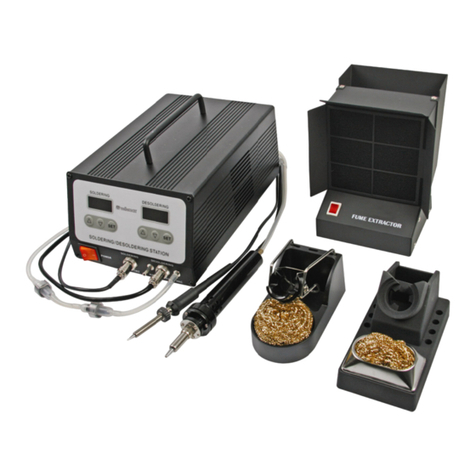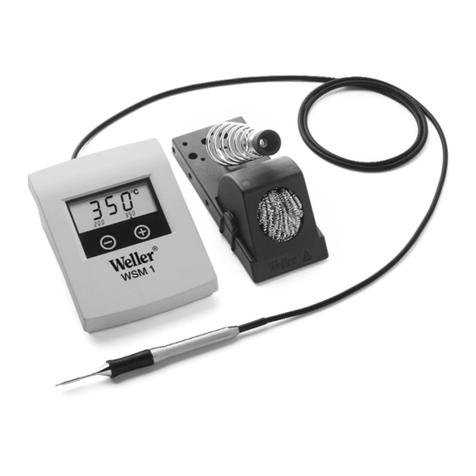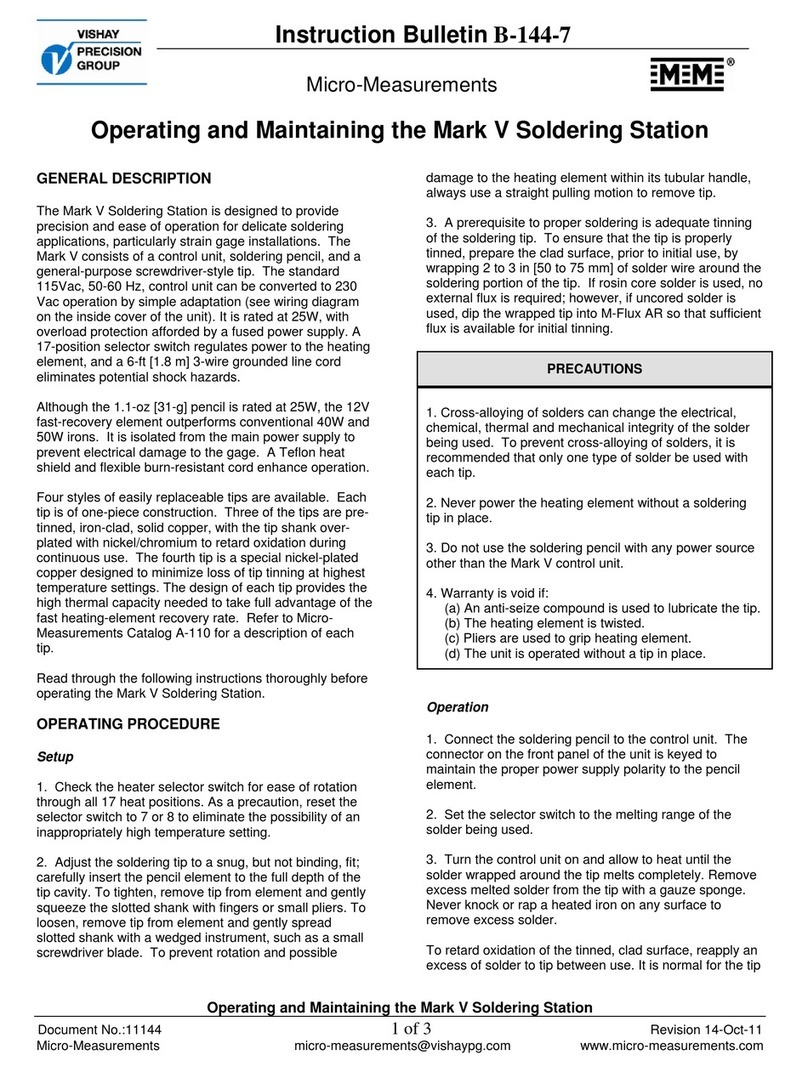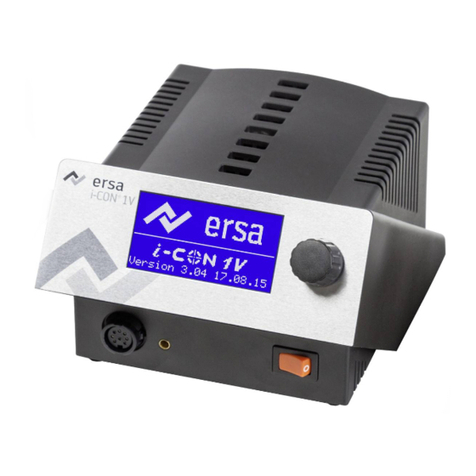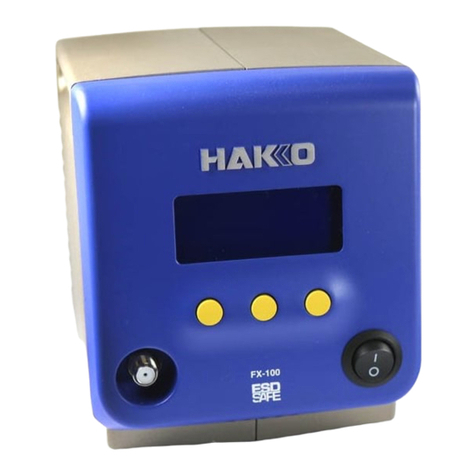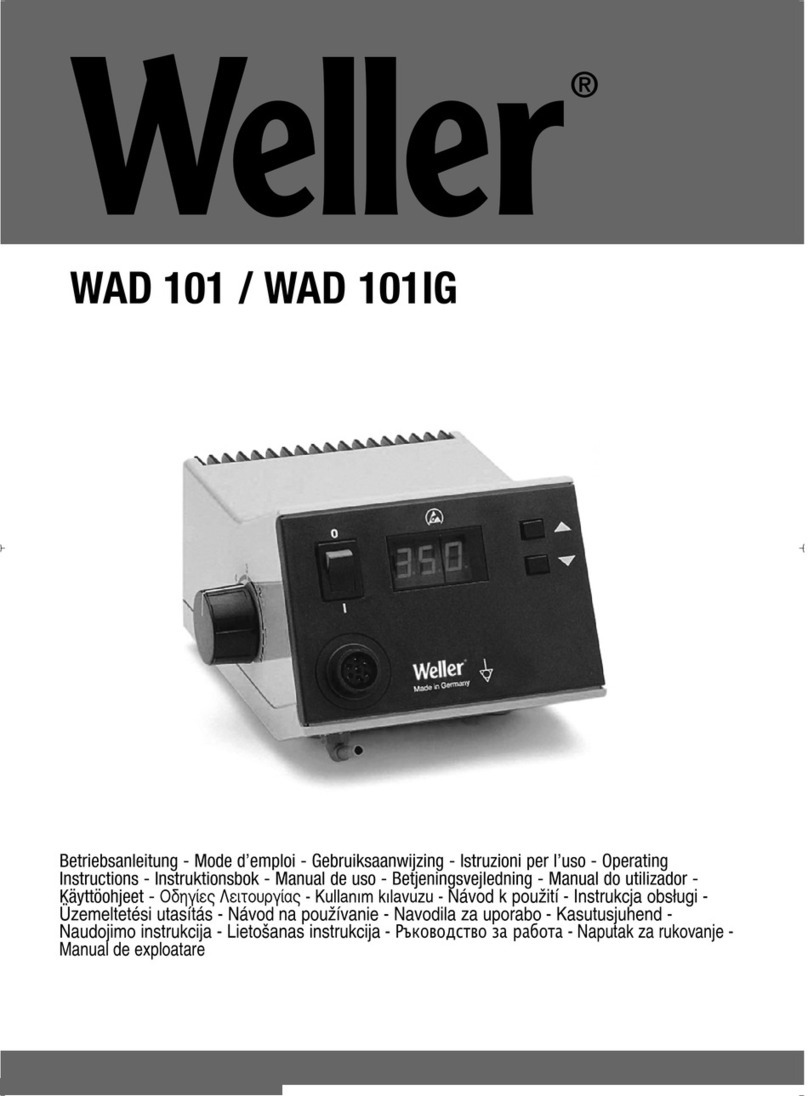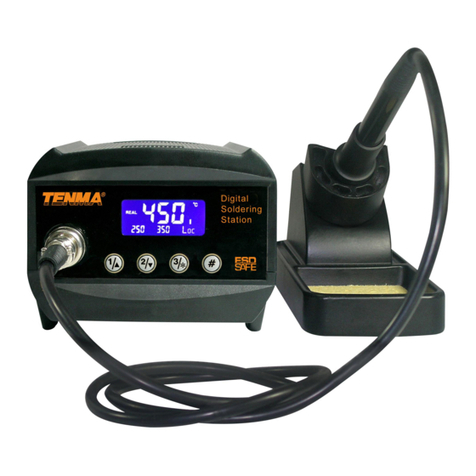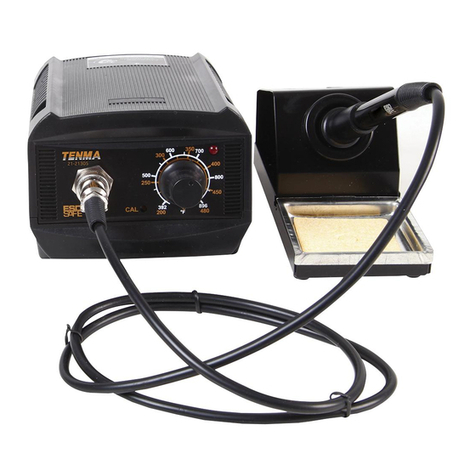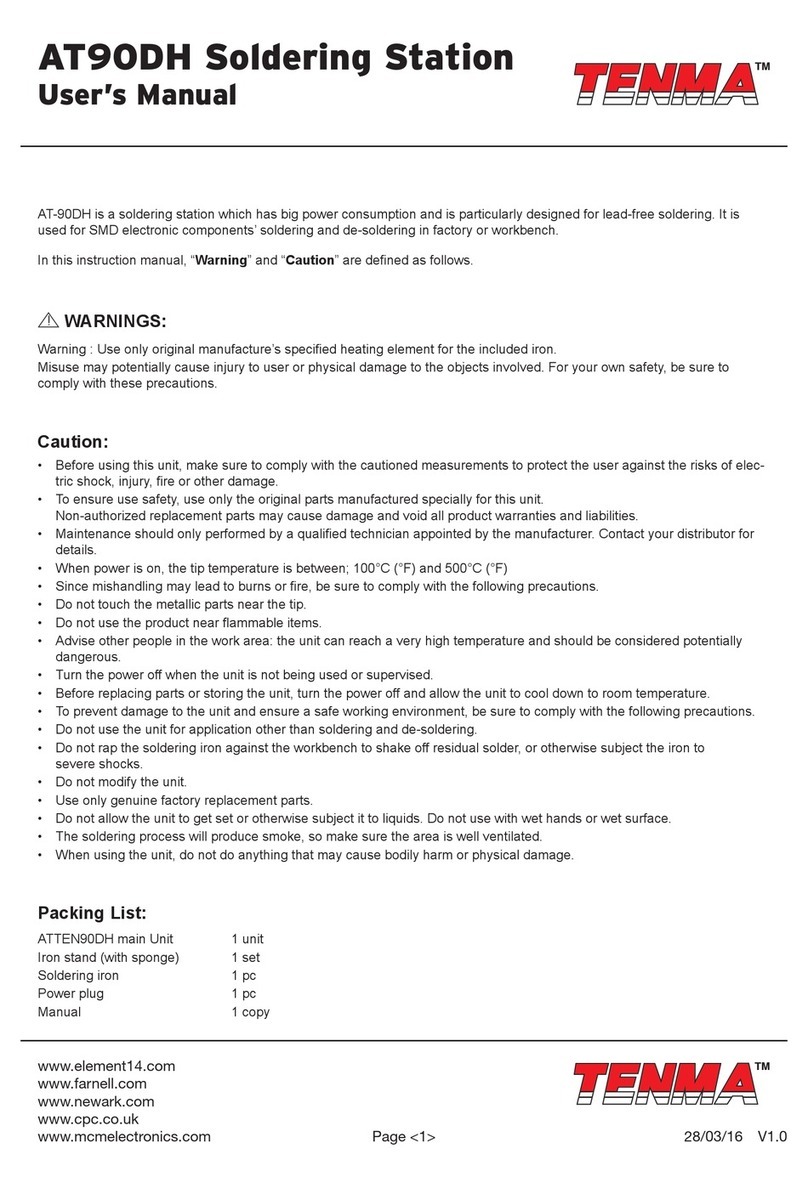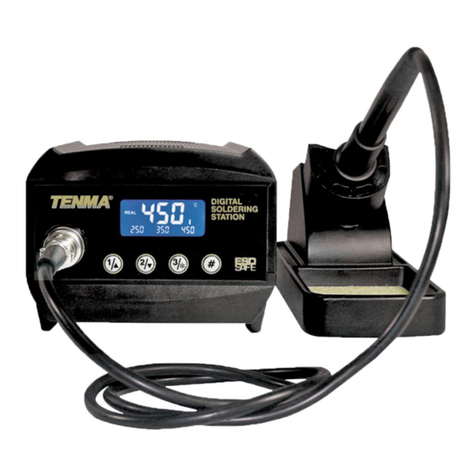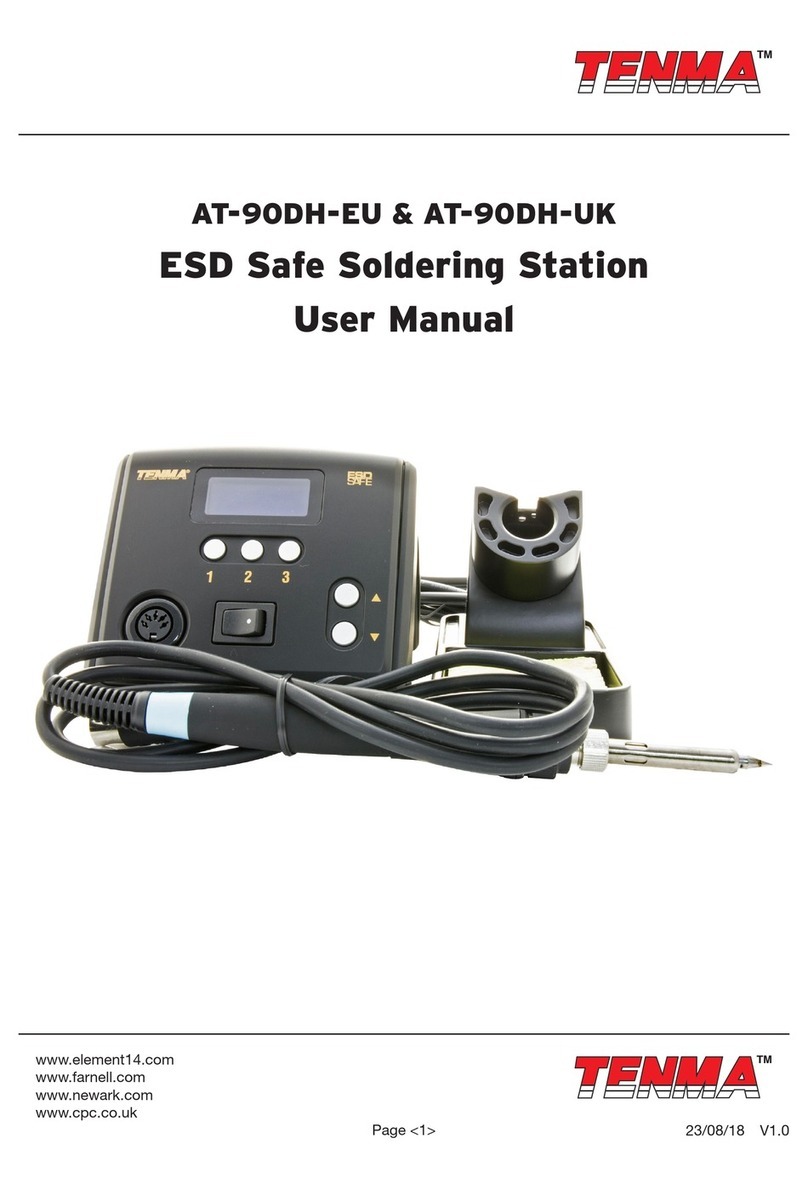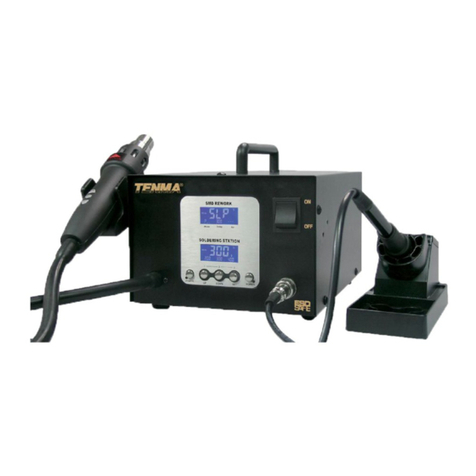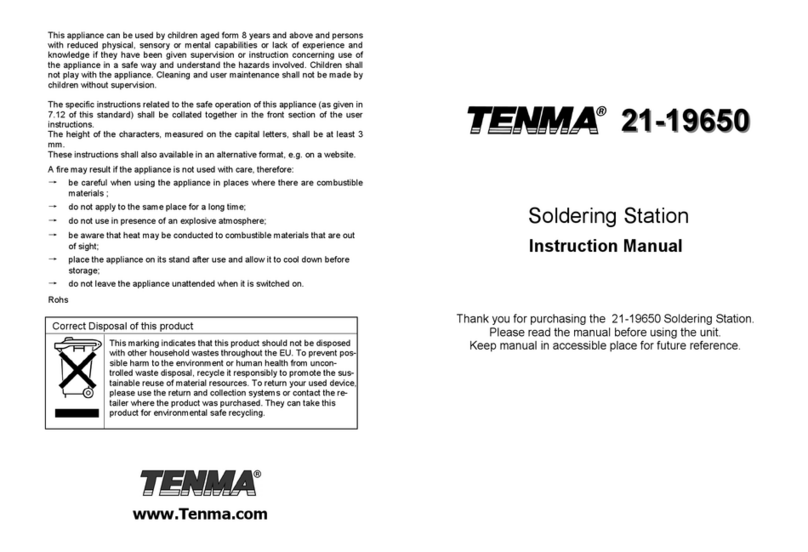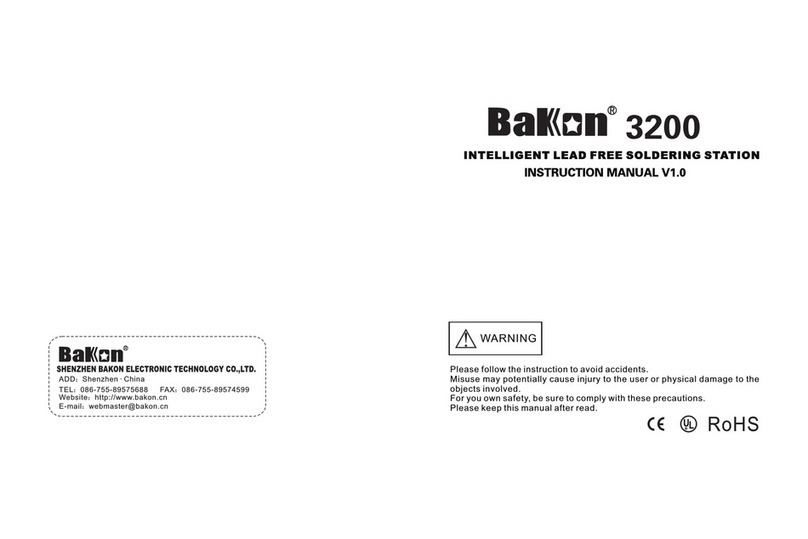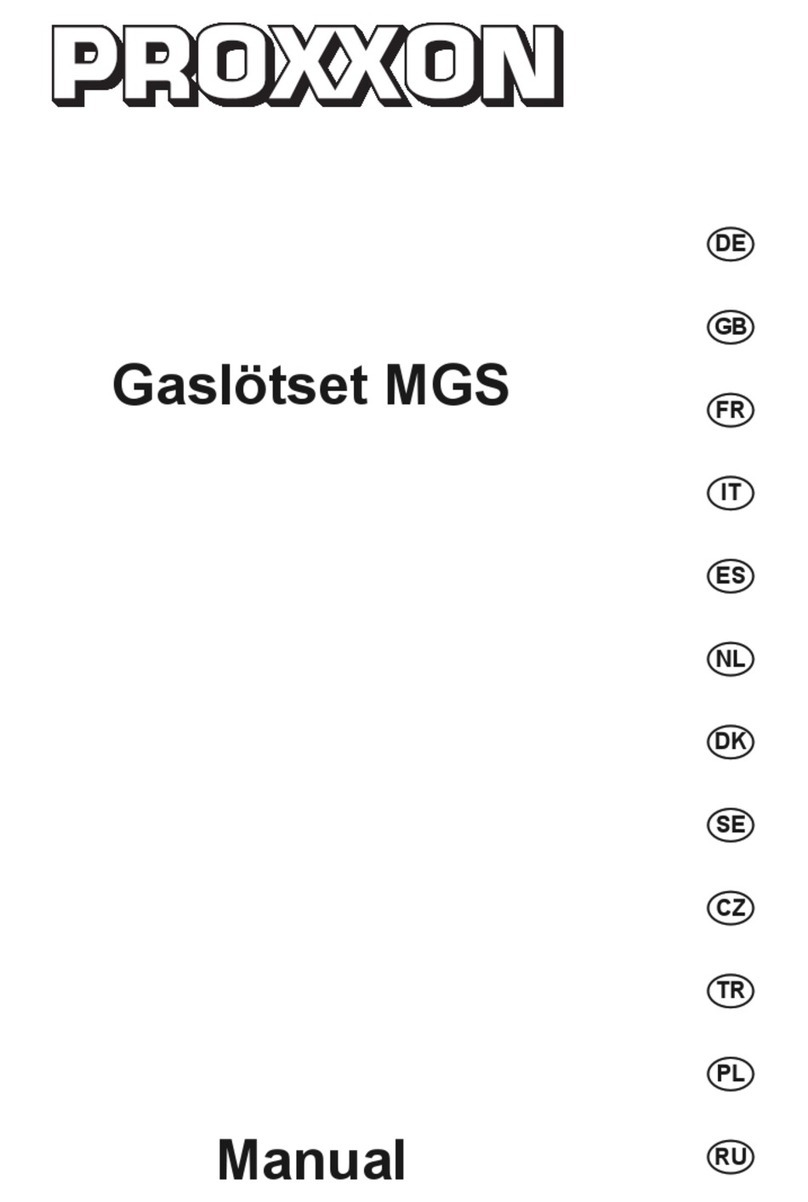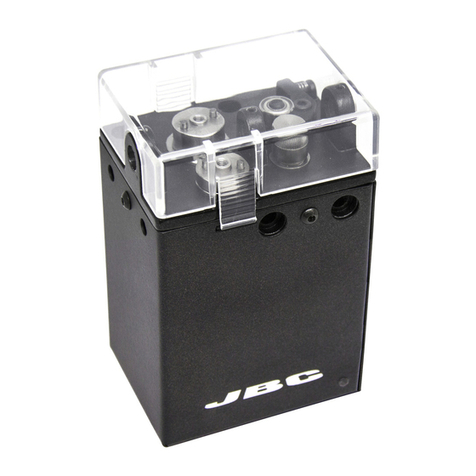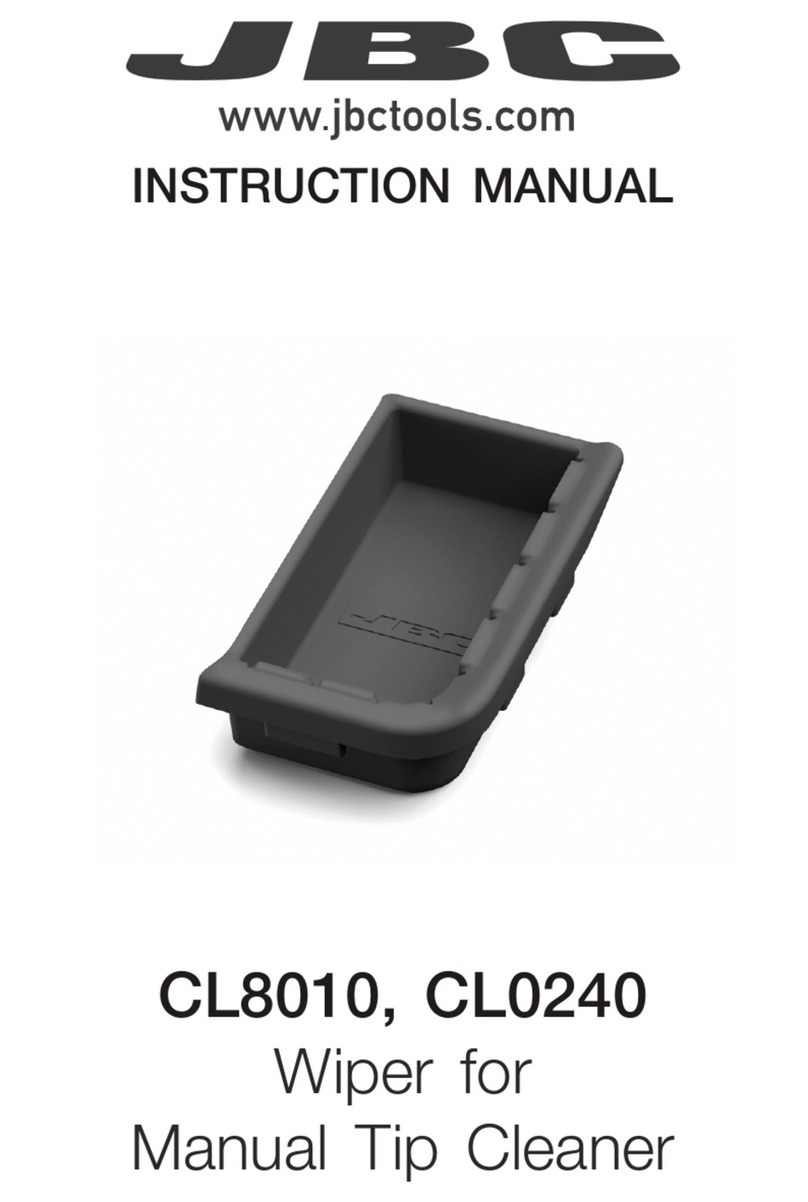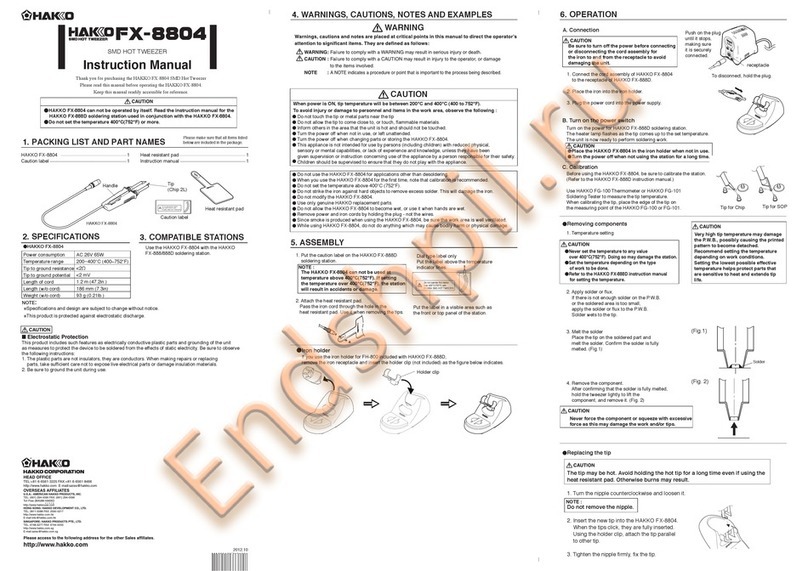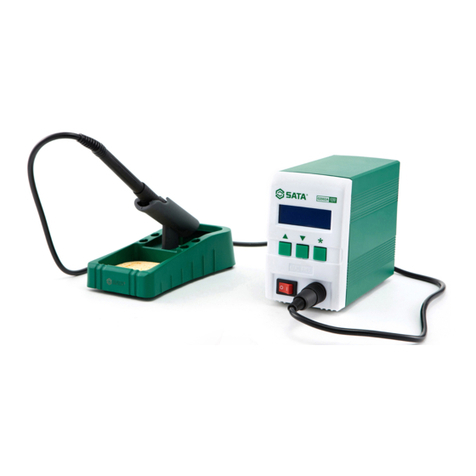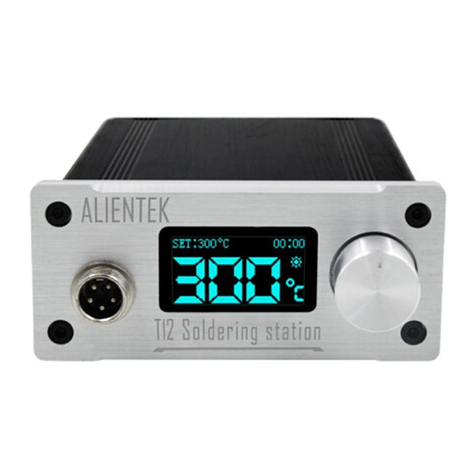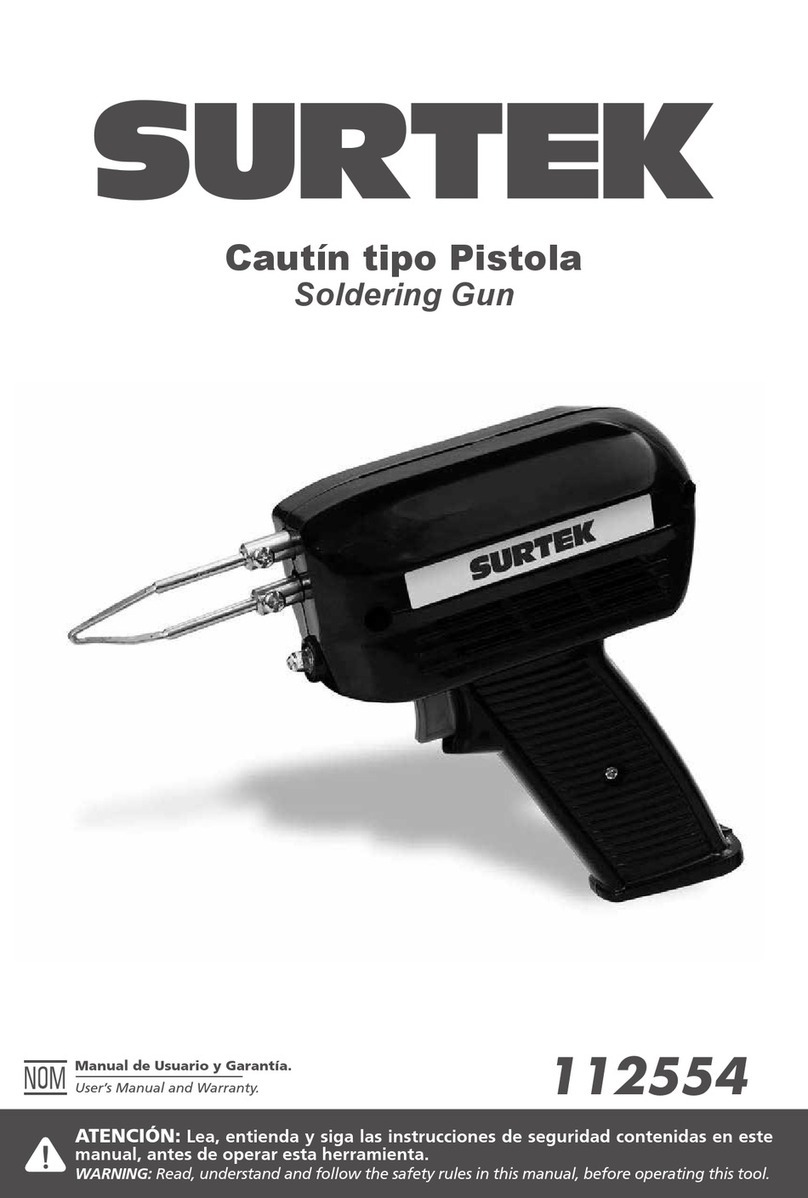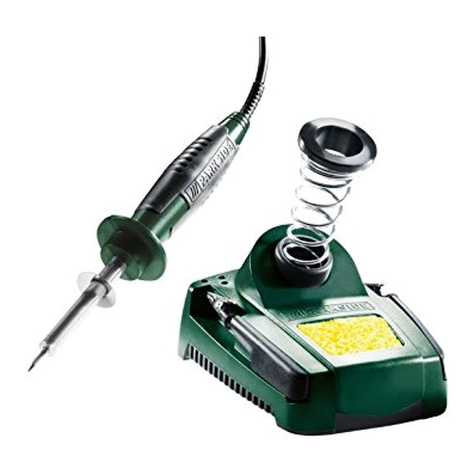
www.element14.com
www.farnell.com
www.newark.com
www.cpc.co.uk
Page <7> V1.007/05/18
Changing Soldering Tip
• Always turn the power OFF when removing or inserting a tip
• Let the tip to cool down to room temperature before holding it with heat resistant pads
• Unscrew the metal cap nut (1).
• Pull out the shaft of the soldering iron(2).
• Replace it with a new soldering tip.
• Put back the shaft and securely lock with the metal cap nut
Correct Disposal of this product.
This marking indicates that this product should not be disposed with other household wastes throughout the
EU. To prevent possible harm to the environment or human health from uncontrolled waste disposal,recycle
it responsibly to promote the sustainable reuse of material resources. To return your used device,please use
the return and collection systems or contact the retailer where the product was purchased. They can take this
product for environmental safe recycling.
9. Soldering Tip Care and Use
a. Tip Temperature
• High soldering temperatures can degrade the tip
• Use the lowest possible soldering temperature. The excellent thermal recovery characteristics ensure efcient and effective
soldering even at low temperatures
• When not in use, do not leave the soldering iron on at a high temperature as the tip’s solder plating will get covered by oxide,
reduction it’s heat conductivity
b. Cleaning
• Clean the tip regularly with a cleaning sponge, as oxides and carbides from the solder and ux can form impurities on the
tip. These impurities can result in defective joints or reduce the tip’s heat conductivity
• When using the soldering iron continuously, be sure to loosen the tip and remove all oxides at least once a week. This
helps prevent seizure and reduction of the tip temperature
• After use, wipe the tip clean and coat with fresh solder. This helps prevent tip oxidation.
10. Changing the Soldering Tip
a. Always turn the power OFF when removing or inserting a soldering tip
b. Let the tip to cool down to room temperature before holding it with heat resistant pads
c. Loosen nut (1 in diagram 7)
d. Pull out the shaft of the soldering iron (2 in diagram 7)
e. Remove the old soldering tip and replace with new one (3 in diagram 7)
f. Reverse the process to secure the soldering tip
g. Preferred Soldering Tips : 21-10140, 21-10142, 21-10144, 21-10146, 21-10148, 21-10150, 21-10152, 21-10154, 21-10156,
21-10158
Important Notice : This data sheet and its contents (the “Information”) belong to the members of the Premier Farnell group of companies (the “Group”) or are licensed to it. No licence is granted
for the use of it other than for information purposes in connection with the products to which it relates. No licence of any intellectual property rights is granted. The Information is subject to change
without notice and replaces all data sheets previously supplied. The Information supplied is believed to be accurate but the Group assumes no responsibility for its accuracy or completeness, any
error in or omission from it or for any use made of it. Users of this data sheet should check for themselves the Information and the suitability of the products for their purpose and not make any
assumptions based on information included or omitted. Liability for loss or damage resulting from any reliance on the Information or use of it (including liability resulting from negligence or where the
Group was aware of the possibility of such loss or damage arising) is excluded. This will not operate to limit or restrict the Group’s liability for death or personal injury resulting from its negligence.
Tenma is the registered trademark of the Group. © Premier Farnell Limited 2016.
